A local £15 set lunch you need to discover
Plus: the story behind Violet Tipton, Kentish Town's least known celebrity, six new 2025 openings and relaunches, the Kentish Town Panorama, Panadera closes and a history of Prince Of Wales Baths
So, have you ventured inside yet? Admittedly, it’s hard to reconcile the rustic interior of Kentish Town Road’s newest pub, the Old Farmhouse, with its previous incarnation as the bohemian Lady Hamilton. And yet, aesthetics aside, what I didn’t expect was for its pasta to be so impressive and - if you visit on a midweek lunchtime - such fantastic value.
But first, some backstory. This is a pub that’s had more lives than most. Originally known as the Star & Garter, in 1885 it was rebuilt into its present form with that red brick exterior. Rechristened the Old Farm House (note the plaque), it survived for decades before a short stint in the 1990s as Dolly Fossetts, then O’Reilly’s in the noughties, and Camden’s Daughter and Lady Hamilton in the ‘teens. Phew. It’s seen them all come and go.
No wonder it exudes such a necessary sense of calm in 2025, with those gently distressed walls, and a green-tiled open kitchen. The feel is elegant rural pub - as its restored moniker suggests - underlined by a new food menu created by two northern Italian chefs, Shila and Elia, under their guise Piena e Felice, a concept they created during lockdown. “The phrase literally means “full and happy”, they say. “Making fresh pasta is an art that is learned from an early age.”
And this, it seems, is true. Burgers and salads aside, you can dive into, say, a la carte options like green pappardelle pasta with truffle cream and mixed mushrooms, or spaghetti in garlic, olive oil and chilli, topped with crispy breadcrumbs and lemon zest. But it was the reasonable £15 lunch that drew me in. It comprises two choices of pasta (meaty or plant-based), a burger or salad, with either a soft or alcoholic drink, which includes Camden Hell’s or a 175ml house wine.
The ragu was a no-brainer, surely a gauge of the chef’s skills. A perfect pile of egg-free handmade strozzapreti (which means “priest stranglers", the name having various origin stories) possessed a slight, rather addictive chew, the beefy sauce - cooked for six-hours, the chef told me - glisteningly rich with deeply meaty umami flavour. For what is essentially a tenner - or maybe even £8 or £9 taking into account the value of drink included - this is outstanding value.
In the sake of research I ordered two starters as well, to get a broader feel for the cooking: a mound of healthy friggitelli (an Italian variant of padron peppers) were sweet, the glaze of balsamic adding its tang, while a well-sized portion of garlicky sautéed mushrooms on crisp grilled polenta slices was pleasingly authentic, if a little filling. But the real flavourbomb? Definitely that pasta. The £15 lunch runs Mon-Thurs, 12-4pm @theoldfarmhousepub
Enjoy reading this Substack? It’s currently free for everyone, but this is only possible through the generosity of reader donations. So if you’ve found Kentishtowner useful over the last 15 years and can afford a donation to keep it going, that would be wonderful. Donate here.
Welcome to this first monthly issue of 2025. It’s a packed one today with the story of Violet Tipton, Kentish Town's least known early 20th century celebrity, two sad closures including latest casualty Pizzeria Di Camden, Junction Road’s new cafe Sweety Cooky, the story of the Kentish Town Panorama, and a potted history of the Prince Of Wales Baths. But since we’re at the top of the year, how about a round-up of half a dozen happenings to kick things off?
Patron’s Winter Garden
After the success of their bucolic secret garden last summer, Fortess Road’s longstanding French bistro - which unbelievably celebrates a decade this year - have launched a winter version, complete with plants, glowing candles and fairy lights, for the colder months. Hidden away behind the restaurant, it’s a cosy retreat under a long, French striped canopy with warmth from the outdoor heaters, set white-clothed tables, plush seating, soft furs and warm blankets draped over each chair. Date-night ready, indeed.
Lord Southampton’s food menu launches
The lovely Gospel Oak backstreet pub which we wrote about before Christmas when it opened has a corker of a new food menu - all croquettes, anchovies and sausage rolls at very sensible prices. Hand-written specials include cottage pie, or pork chop with roast shallots and stout gravy. Small plates are around a fiver upwards, mains around ten. This feels seriously good value. And, say owners Aimee and Phil, the chef is Tom Ziehe (ex-Montcalm East).
The Dark Horse replaces The Farrier
Will this venue ever work? That’s what I thought when I made the pilgrimage down to touristy NW1 this week to see the latest incarnation of the “pub” in the Stables Market, pictured above. At least its new owners, the guys behind the hit restaurant Le Bab have as good a chance as any to make it a success, but the real problem seems to be attracting locals after dark to hang out in Camden Market. Still, simple gastropub fare - pies, fish and chips, burgers - might do it.
The Great Indian opens
The Jolly Good Chef is the award-winning geezer behind this new N19 boozer on Marlborough Road. “With 28 years of hospitality expertise,” he says, “I’ve drawn from my extensive travels across India, from North to South, East to West, and curated a menu inspired by the diversity of regional cuisines, fusing flavours with a gastropub feel while honouring my Indian roots”. Sounds like an absolute must.
Sourdough by Sofia hits Swain’s Lane
The sourdough queen - who also has a newish outlet near Highgate tube - excitedly shared her latest news last week on social media. “This location is a pretty special one for Jesse and myself,” she said, “as it was our home turf when I first moved to London - we spent many a weekend strolling around here in our early 20s.” The bakery opens opposite the Duke Of Saint Albans pub in March.
The Lord Stanley refurbed
In the unlikely event that you didn't know, one of Camden’s most stunning watering holes, the Lord Stanley, is currently being extensively refurbished and due to reopen in March (fingers crossed). Reader Rob emailed to say the plan is that the toilets are moving upstairs, the kitchen is being relocated and the bar will be a full circle. “They also tell me that the decor will remain the same - again, fingers crossed - as I was quite concerned about this.” What do you think?
Paid partnership with The Tipton
Who exactly was Violet Tipton?
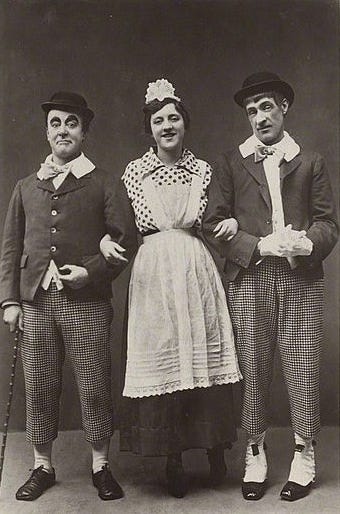
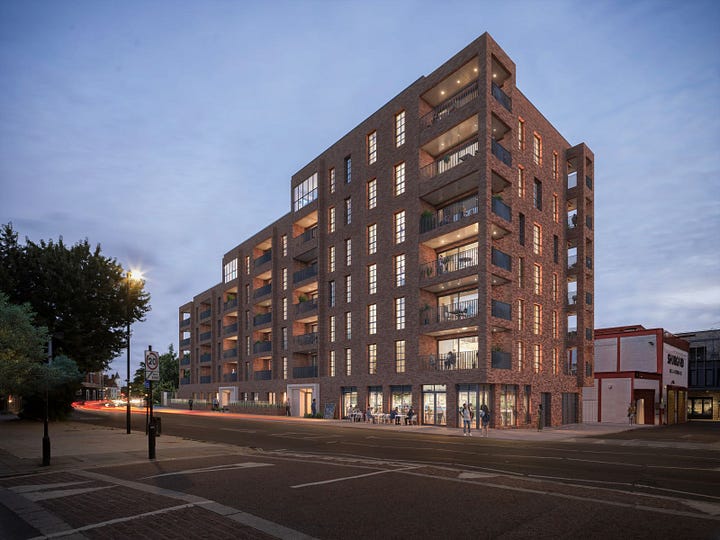
Over the last few months you’ll have seen the new apartment block, pictured above right, spring up next to the grade II-listed Christ Apostolic Church on Highgate Road. But have you wondered about its name?
Well, ‘The Tipton’ takes its moniker from one of the first 20th Century female stars, Violet Mary Tipton, who was born in Kentish Town in 1886. Already making her name as a West End chorus girl by the young age of 16, she was given the leading female part in The Bing Boys Are Here, which became one of the most popular musicals of the era. Her success was such that she was even celebrated in Times obituary in 1956: “She possessed the warmth and tenderness that belongs only to great artists."
Another site, Hunstanworth History writes, “Violet was a celebrity, possibly one of the first in the 20th Century to experience the 'superstardom' that mass communications made possible. All the adulation and adoration could have gone to her head, but it appears she was way too 'grounded' to let that happen.”
As with many notable females in history, there’s no blue plaque in Kentish Town to mark the birthplace of this star - in fact only 15% of plaques celebrate women according to English heritage - so The Tipton embraces a woman who joins a long history of female talent - from Mary Shelley to Phoebe Waller Bridge - who have called this corner of London home.
This week on kentishtowner.co.uk we’ve teamed up with the Tipton to show you inside its 42 apartments: the bedrooms and living spaces, as well as the private balconies, and landscaped, communal roof-top terraces with far-reaching views across London. Take a peek inside and read more on The Tipton online here.
Finally, the team would also like to shout out to any local yoga/Pilates studio or café who might be interested in taking over the self-contained commercial unit on the ground floor. If that’s you, email: info@gmlondon.com
What exactly is the Kentish Town Panorama?
Of course Kentish Town is ancient – dating back to 1206 – and has many claims to fame. But did you realise that there exists a Kentish Town Panorama, depicting four and a half miles of local scenery at the turn of the 19th century?
Historians say the work, completed by artist James Frederick King in 1850, is ‘without comparison’ in London, showing us ‘modest and grand buildings, domestic, public and agricultural on both sides of the principal roads of the time.’ And in many instances the Panorama, drawn in pen and wash and consisting of three rolls (one 20ft, another 15ft and a last one 3 ft), is the only record we have of what the area was like.
The longest roll shows the east side from Swain’s Lane following Highgate Road through Kentish Town Road to St Pancras Way (and St Pancras Old Church); the second depicts the west side from what is now Camden Town tube and back up to Swains Lane. The third runs from the Castle Tavern (now an estate agent’s), the old entrance to Kentish Town, right down to the Mother Red Cap in Camden (now the Camden Eye.)
When the Panorama was republished in 1986 as 26 panels, John Richardson, who provided the commentary, wrote that little is known of the artist. King was born in 1781, a middle class boy sent to ‘one of the better schools in the area.’
In the 1851 census, around the time he drew the Panorama (which aimed to depict how the area looked around 1800, in his childhood) he entered himself as a ‘retired artist’, although a death certificate gave his occupation as ‘collector of the paving rate.’
In 2025 we’ll be regularly dipping into the stories that make up the Panorama. But let’s start with the often-overlooked Assembly House pub (above).
James Frederick King handwrote this on the scroll: ‘The old Assembly House of very long standing was held in great repute, being a pleasant distance from London, when those who sought a Country Walk could meet there with every enjoyment a Country Inn could supply; besides which it was famed for Club dinners annually given, called ‘Beanfeasts.’ There was also a reserved Parlour where none but the Members of a Society called ‘Social Villagers’ were permitted to enter, which consisted of the aristocracy of the village and where many cheerful evenings were spent as far as the Glass and Pipe could furnish, to pass a convivial hour, which often cheered their buoyant spririts and sent them home ‘merry.'”
So basically nothing’s changed. Except that the pub, then one of Kentish Town’s principal drinking places (and known as the Bull until 1784), was a large, partly wooden house with a long room on the south side entered by an outside covered staircase (see above, on the left).
The original building wasn’t to last, and it was rebuilt in 1852 and then again in 1898 in all its current Grade II-listed Victorian gothic splendour: note the etched glass and spooky corner turret.
Safe to say the building certainly looked foreboding in the rain yesterday, perched on its ancient roots right in the heart of Kentish Town.
The Kentish Town Panorama, published by the London Topographical Society in 1986, is available online at various prices upwards of around £15.
Just a little note (I’d love you to read this)
Kentishtowner turns 15 in 2025. As usual, a billion thanks to those who donate: it’s only you guys who keep North London’s longest running food & culture title alive. So if you enjoy the recommendations - or have even found a few useful over the years, and fancy tipping us a couple of quid, that would be great. Or even more if you like. It all helps. Thanks so much - Stephen, editor.
Panadera: Kentish Town’s unique Filipino bakery is closing
It was sad to hear that Panadera is closing later this month. Situated on the lower reaches of Kentish Town Road, it’s the lovely little spot near local institution Bintang and ice cream parlour Mama Sons (all owned by the same family).
“With a very heavy heart, I have to share that Panadera will be leaving Kentish Town this January,” owner Florence Mae wrote on Instagram. “After facing landlord difficulties and operational challenges, I had to make the painful decision to close this chapter.”
Landlord difficulties: the curse of the independent business in London. She continues: “Kentish Town wasn’t just where Panadera started – it’s where my dreams of sharing Filipino baking with the world first came to life. It’s where we baked our first pandesal loaves, where we stayed up late perfecting recipes, and where we poured our hearts into creating something special for the community.”
Panadera translates as “female baker” in Tagalog, and its signature lunch is a corned beef hash sando, but we always loved the outstandingly simple egg sando. The crustless Panadera loaf is sliced and toasted, and the juxtaposition of flavours in the generous filling – rich, creamy, savoury, herby and sweet – is utterly delicious.
She reassured her followers that this “isn’t the end for Panadera” – it’s just “goodbye to the place where it all began.”
Also announcing their closure this week is the excellent Pizzeria Di Camden on Royal College Street. “It has been an extraordinary adventure,” they said on Instagram. “From the inception of an idea to the delivery of North London’s best Pizza. A nine year journey of development, evolvement and lots of laughter drowned in wine. What started off as a dream quickly turned into community staple and lantern that lit up Camden’s cold nights.”
Sweety Cooky: Junction Road’s tranquil spot
Need a quiet new cafe space to work from? This new Junction Road opening, with its ecru furnishings, wooden floors and pendant lighting is almost midway between Archway and Tufnell Park, although slightly nearer the latter. Its humble tables and chairs lay surprisingly empty on my visit, as jazz tinkled softly, and a staff member stood glued to her phone.
A counter of the usual pastries lie in wait for the sweet-of-tooth, while a long black - using Ozone beans - is a well-priced (for these parts) £2.50, and various toast options exist under a tenner.
So yes, if you’re a freelancer, this feels like a good option to work, as I did, with a laptop; it’s far quieter than most of the cafes in Kentish Town, the many windows adding to the sense of airy calm. But for their sake, let’s hope it picks up a local following soon.
The fascinating story of Kentish Town Baths
One hundred and twenty-five years ago, the local authority – then St Pancras – poured money into a state-of-the-art public facility for the residents of Kentish Town. Comprising of a wash house, public hall and baths, the deep red brick and terracotta edifice was a sight to behold, but one that withered in its visual and social impact as the decades rolled by.
Prince of Wales Baths, reinvented in the last decade as the rather more utilitarian ‘Kentish Town Sports Centre’, was an instant hit. A grand Victorian project that served the very mixed community in the more rigid style of the time. Hence separate bathing areas for men and women, and entrance via a class system (second class men didn’t get such prestigious stonework saints above their door. Or a towel and soap.)
In the wash house, women went about mangling the family smalls. 129 cubicles featured personal ‘slipper baths’ and as well as the regular community events in the hall, boards were put over the baths during winter so that huge dances or boxing matches could be held.
But of course, society’s wants and needs were on the move, and buildings so gloriously stiff in their provision of ablutions, courtship opportunities and teeth crunching spectator sports were to struggle to stay relevant and swerve the wrecking ball.
The inevitable ruthless modernisations took place, including brilliant-at-the-time ideas such as covering the beautiful glass roofs with false ceilings and shoving on a grey corrugated side entrance in the classical 1970s style sported on the also soon to be removed Kings Cross Station folly.
The stinking, dark changing rooms and broken tiles of a certain generation’s childhood memories continued the general slide until the mid-90s when demolition was all but a certainty. Yet, the unpredictable twists and turns of local politics instead saw sign-off for a complicated restoration in the early 2010s.
Reconstruction was serious business. 700 new pieces of terracotta had to be approved by the Victorian Society and English Heritage before they were put in place, 5.5 miles of scaffolding went up in the Willes Pool area alone to uncover the fantastic glass roof (one of 9!) once more.
A local facility once more, there are few places so bold for feeling the connection between the Kentish Town of Victorian times and today. Plus there’s some really great swimming and fitness to be enjoyed, bathed in natural light too – lest we forget.
Finally, the baths have inspired North London artists including tragic Galway painter Danny Carmody, whose work is pictured above (a story we also covered here), and more recently, Tufnell Park-based architectural portraitist Liz Matthews.
This year no less we turn 15. If you value what we do, the easiest way to keep our independent food & culture publication going is to donate less than the price of a coffee (£2, or more if you wish) here. Thanks so much again for your support.
Attention local businesses! Now in our 15th year, Kentishtowner is the longest-running free independent cultural publication in this part of London. If you're a business located in NW1, NW5, N7, N19, N1, NW3 or any surrounding area, please consider working with us to reach many thousands of locals via this newsletter, as well as our website, Facebook, Instagram, Threads and X/Twitter pages. INFO@KENTISHTOWNER.CO.UK 

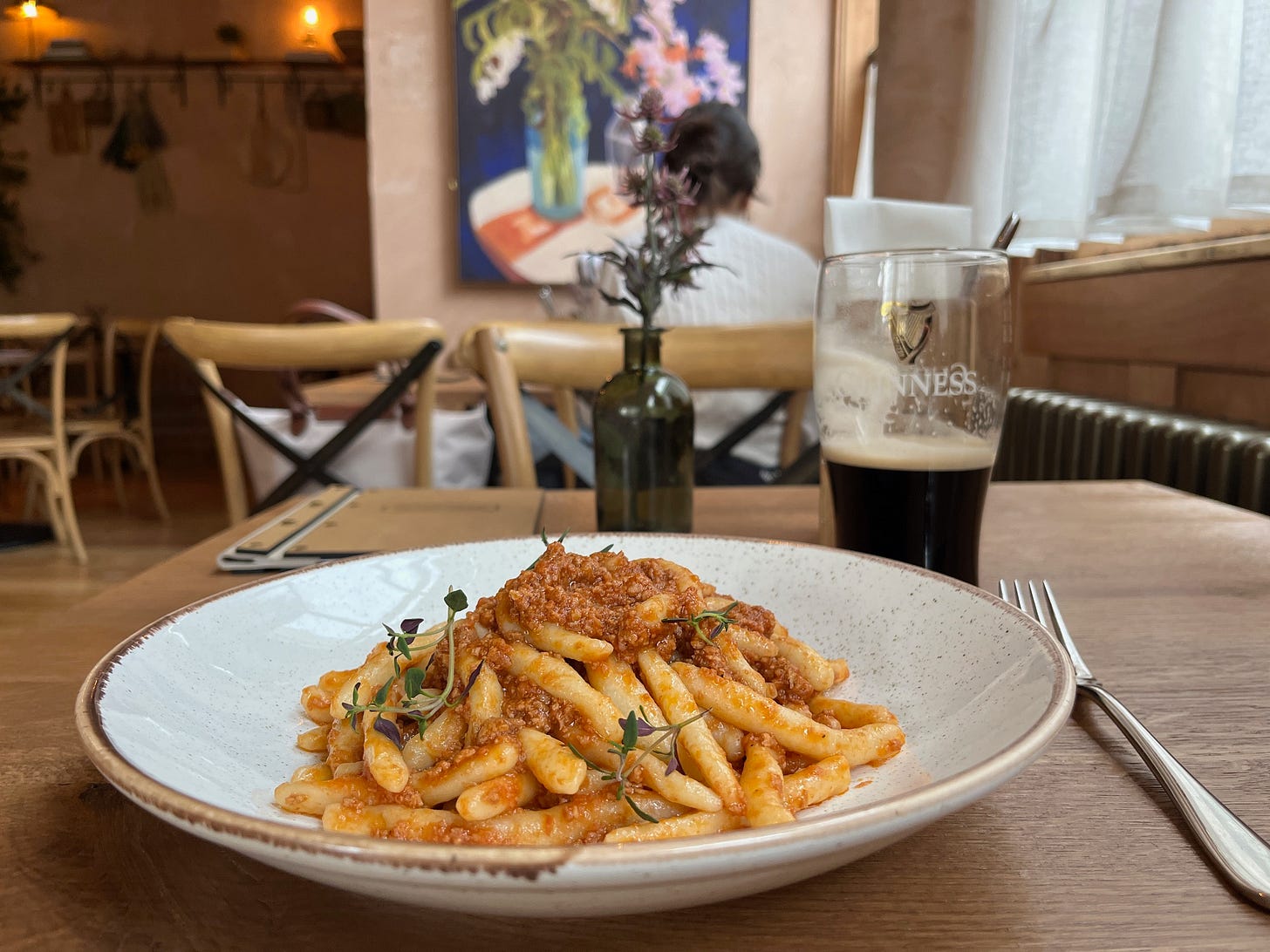
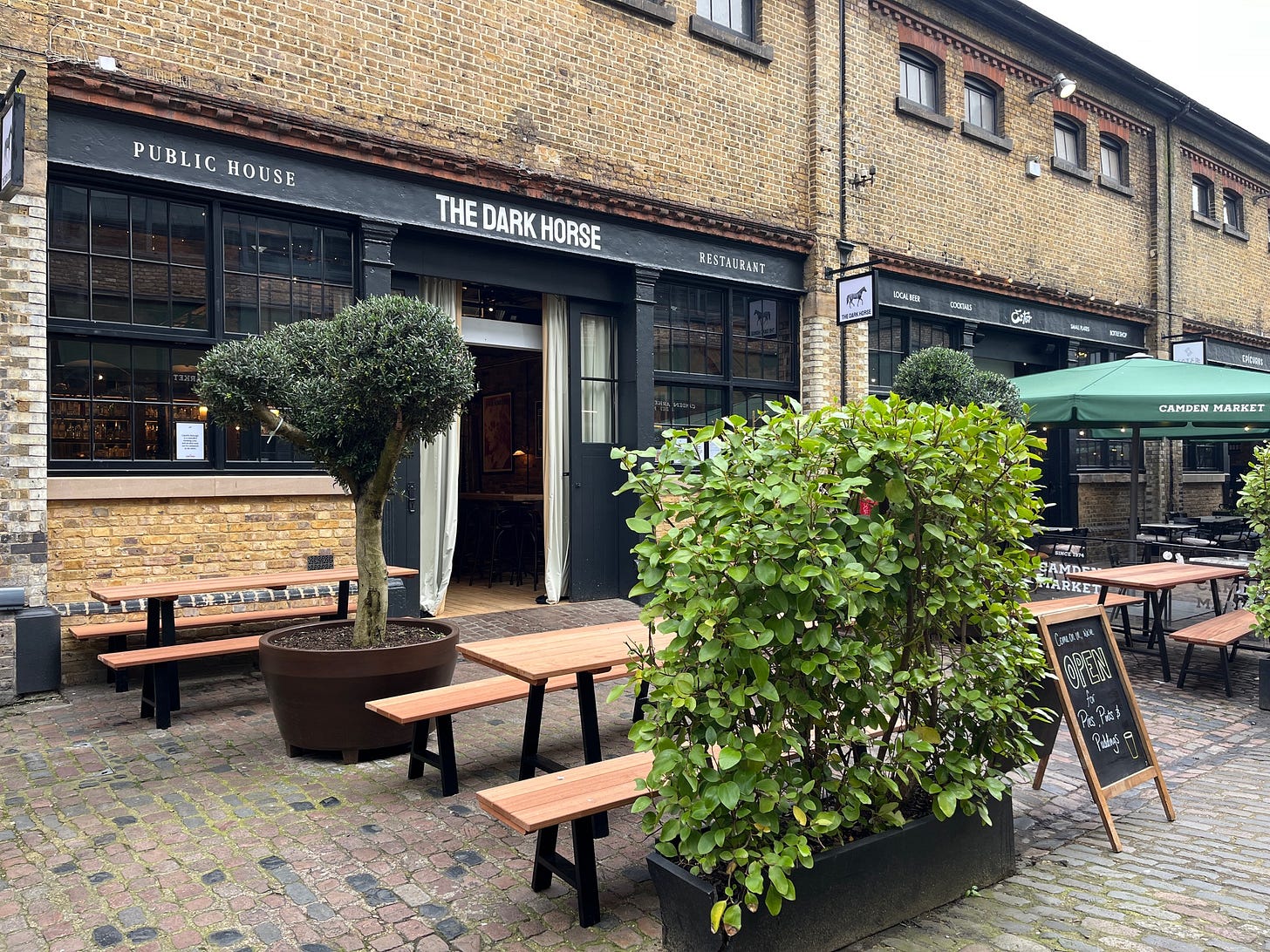
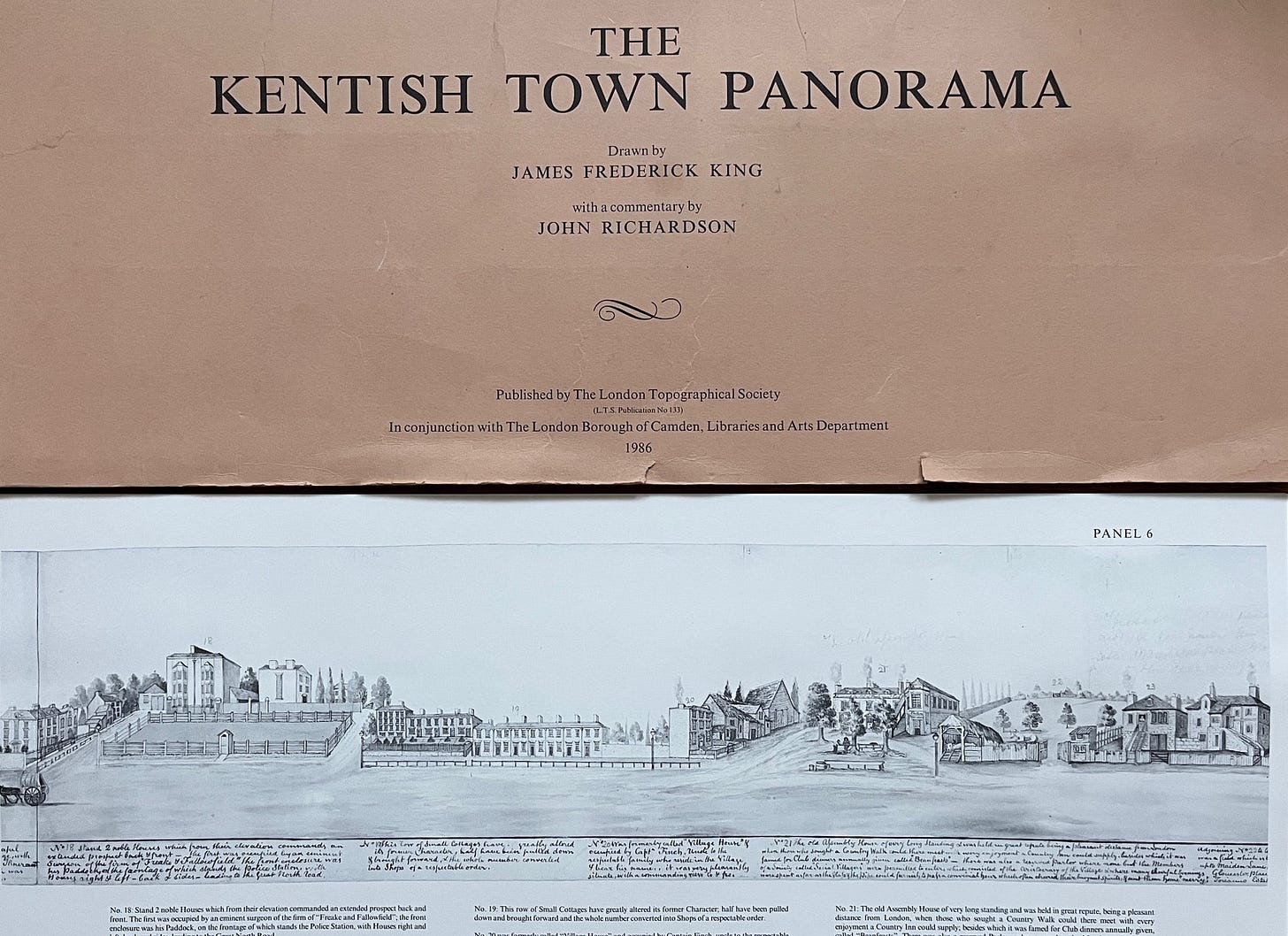
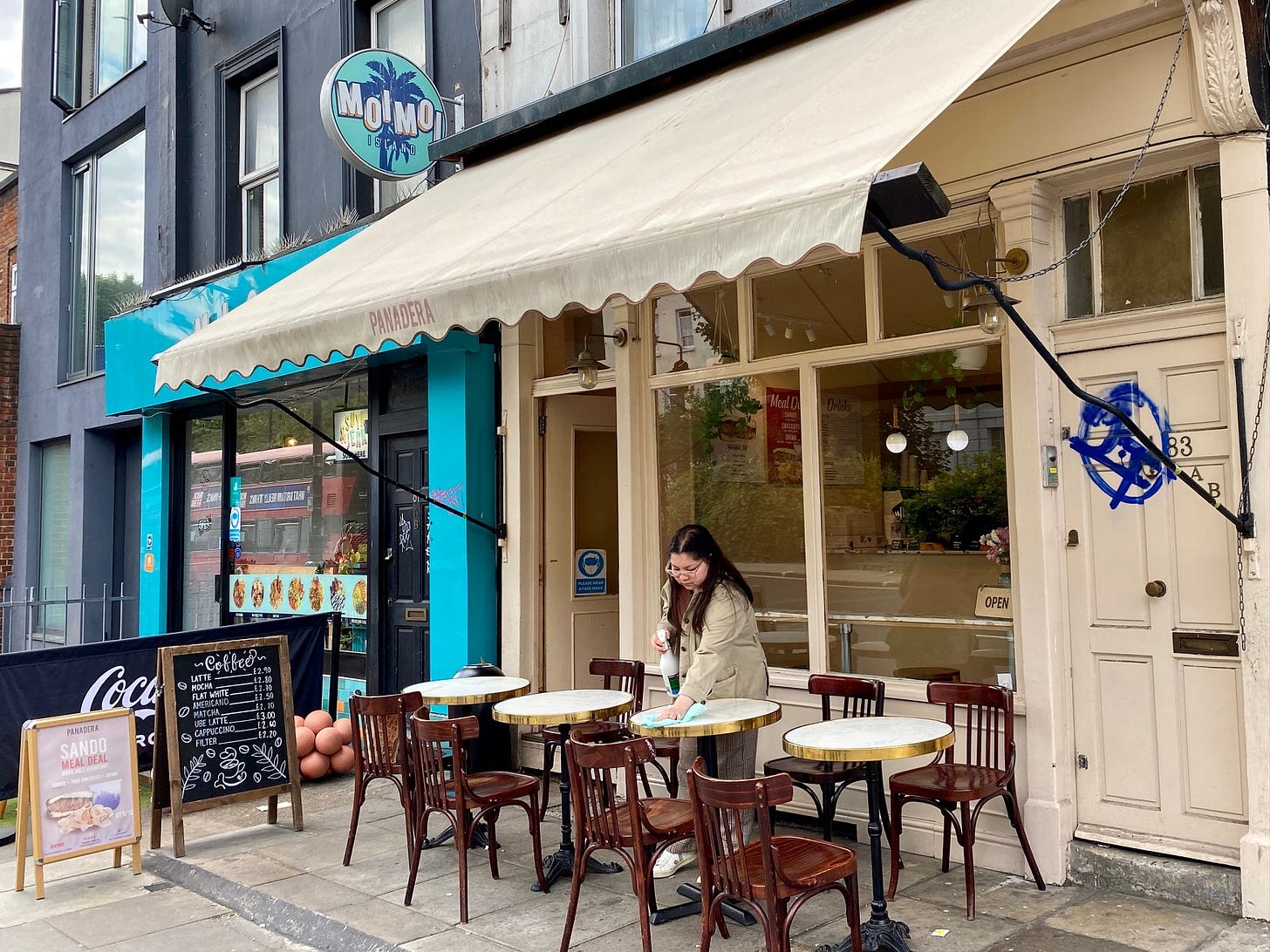
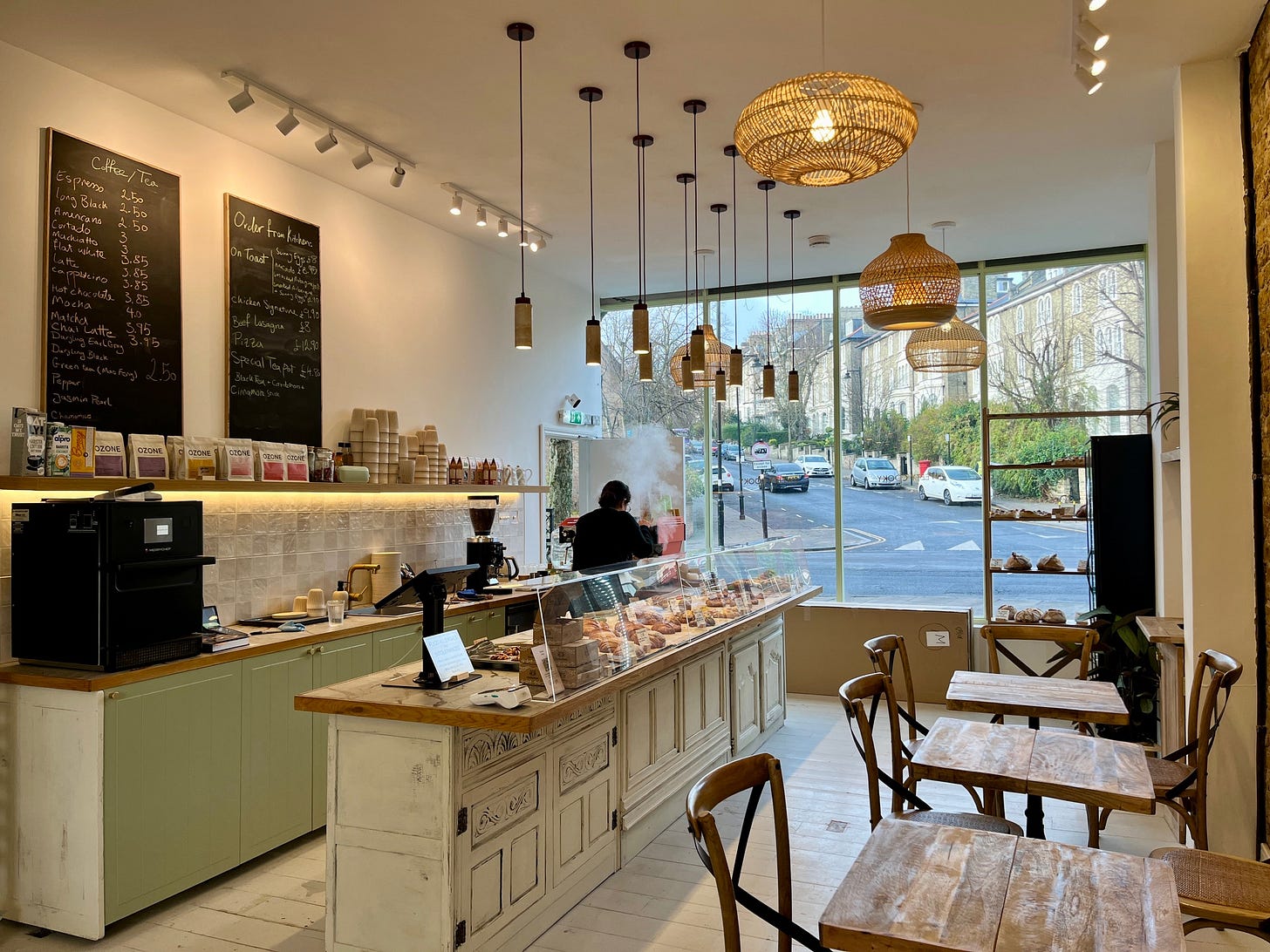
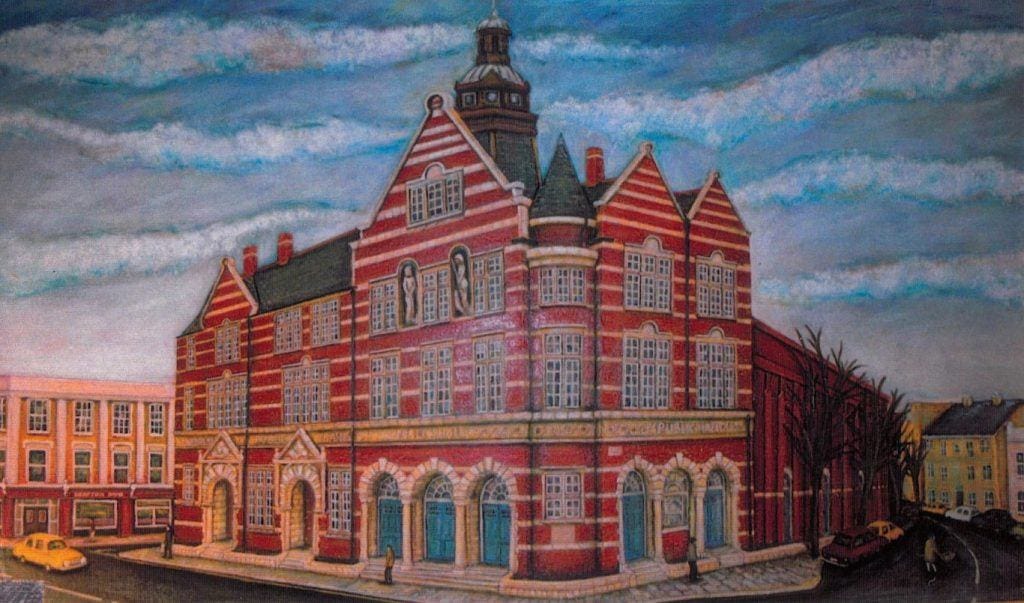
Just a note. It was The Worlds End that was the Mother Red Cap pub. Not the Camden Eye. Which was called The Halfway House.
Also. I learned to swim at Prince of Wales baths. And we went once a week, with my Mum to the laundry. The highlight of which, was the physical fights over the massive dryers. We also found that we could get out of the windows in the loos upstairs, to get onto the roof and look down into the pool and changing rooms, which was made us giggle. I was about 7/8 years old then. I'm now 66 and was born in my Nans house on Gaisford Street.